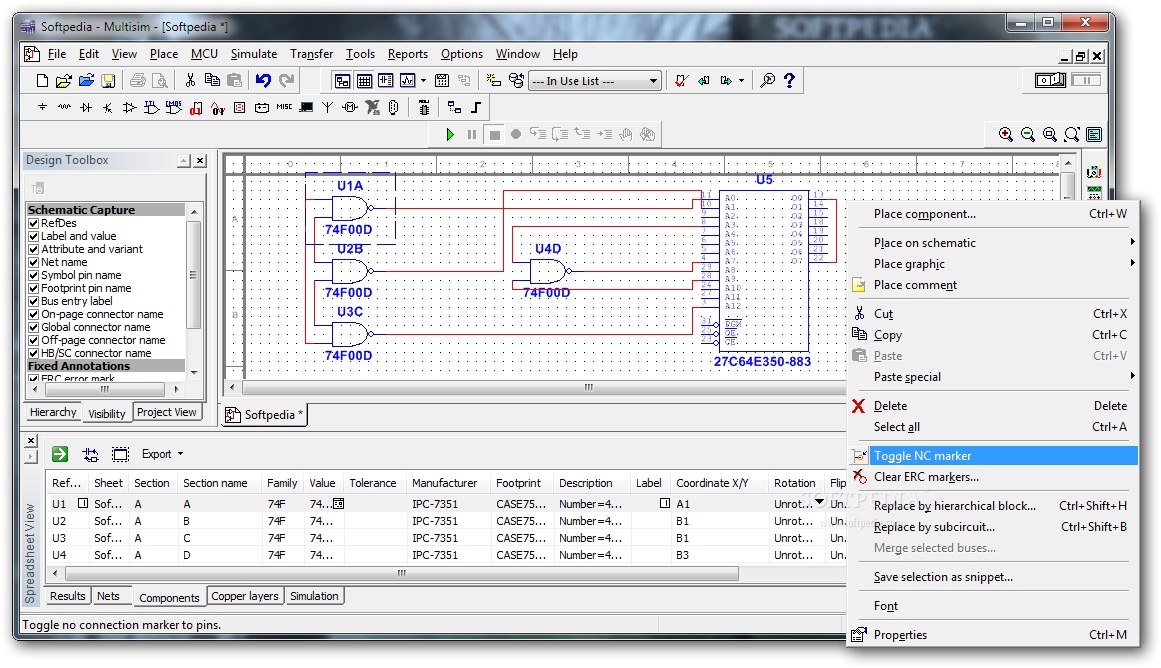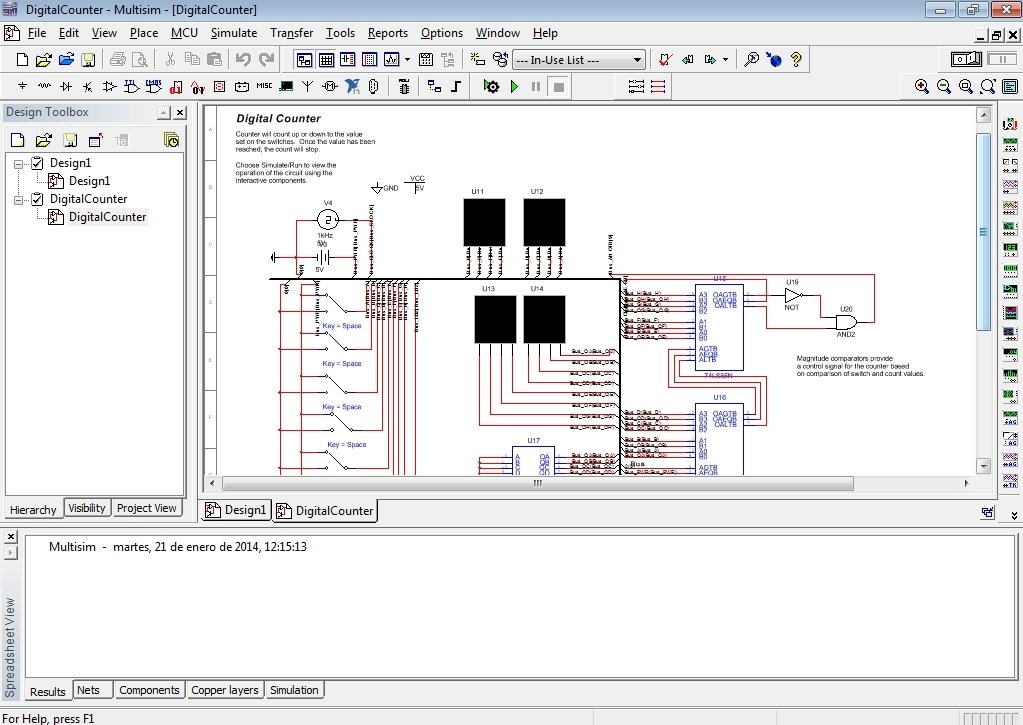Multisim Download Student Mac
National Instruments Corp
Eligibility:

- NI Multisim has a large database of electronic components, predefined schema, SPICE simulation modules and VHDL, support for RF circuits, PCB generator, among other features. Because all this takes place in a simple, integrated environment, however, it's much easier for students and electronics beginners to grasp, especially when it comes to.
- Oct 23, 2020 Multisim Student 11.0 can be downloaded from our software library for free. Some of the tool aliases include 'Multisim Student Demo'. The file size of the latest downloadable installer is 152 KB. This software is a product of Electronics Workbench.
Students will need to enter a new serial number after renewal; however, lab and instructor licenses will continue to use the previous serial number. Multisim Included in Textbook If you have purchased a textbook that includes a copy of Multisim, your serial number can be found on the DVD sleeve included in the back of the textbook.
Faculty
Staff
Student
Software used as part of the UW Campus License is for Faculty, Staff, and Students only. This software may be used for Teaching and Research purposes. Software may not be used for business purposes, and must be purchased by the company intending to use the software.
The full End User License Agreement (EULA) is available in a PDF file.
Cost:
Free
Order:
LabVIEW may be requested from the College of Engineering Software ordering site.

Software Overview:
LabVIEW, from National Instruments, is a graphical programming environment designed specifically for scientists and engineers who need to acquire, analyze, and present scientific data or to control automated processes.
Using LabVIEW, scientists and engineers can acquire data from a variety of sources. Data may be acquired from an instrument such as an oscilloscope or multimeter, or may be acquired through a data acquisition system. Instruments may be connected to a control PC running LabVIEW by a serial, Ethernet, USB, GPIB, or other port. Data may also be read in to LabVIEW from a data file.
Once acquired, LabVIEW can analyze the data by applying a combination of analysis functions. LabVIEW contains hundreds of analysis functions ranging from simple mathematical functions to advanced math (Calculus, ODE’s, linear algebra) and advanced signal processing (FFT’s, filters, Joint Time-Frequency Analysis).
The analyzed data may then be saved to a new file, played out through a signal generator, or shared across a network for others to view the results of the test. Reports may be generated in the form of a text file, Excel spreadsheet, or Word Document.
LabVIEW is a programming environment, but is unique because it is programmed using a graphical dataflow language. Icons representing each function are dropped onto the block diagram.
LabVIEW is used at many companies in the greater Seattle area, including Boeing, Microsoft, and Intel. More information about LabVIEW can be found at http://www.ni.com/labview.
Multisim Download Student Mac Download
LabVIEW is available for Windows, OSX, and Linux.
License Details:
Many modules/toolkits are also available for LabVIEW. UW has a license to use these at no cost. A link to the download site is provided at the end of this session. If you are not able to find the software toolkit you are looking for, you can also contact chris.ramirez@ni.com for information on obtaining these toolkits.
On-line Training:
NI LabVIEW software and NI Multisim software training courses are available online with videos, interactive exercises, and quizzes. Educators, researchers, graduate students, and staff are eligible users. You will need UW's Labview serial number you obtained when ordering Labview.
Self-Paced Online Training

Installation Instructions:
Windows installation:
1) Download the LabVIEW installer, and CD based training kits for Windows software from the UW server. No media, manuals or other physical materials are included.
Alternatively, you can download directly from NI.
2) Different serial numbers are used to activate each product.
- 2017LV-64WinEng.exe Labview 64 bit self extracting archive.
- 2017LV-WinEng.exe Labview 32 bit self extracting archive.
- NIStudentEdition_Spring2017_ENG_WB.exe Labview student, web based installer.
- NI_Circuit_Design_Suite_14_1_Education_downloader.exe Mutisim downloader.
Multisim Download Student Mac Download
3) You will be prompted to enter a serial number. If not already filled in, use the serial number provided when you ordered the software here.
4) Choose what software you want to install.
5) Accept the default installation folders.

6) Accept any license agreements.
7) A NI user profile is required to activate Labview. Login to your NI user profile, or if you don't have one, create a new user profile. Activate your products on the next screen by clicking on the check box, 'I am the end user of these products...' Click 'Next' to start the installation.
8) After installing the core LabVIEW software, you will be prompted to install the “Device Driver” CD. The latest Windows device drivers can also be downloaded from: http://www.ni.com/downloads/ni-drivers/
9) Indicate the location of the device drivers you downloaded and extracted on your pc. The default location is C:National Instruments DownloadsNI Device Drivers.
Mac OS X installation:
1) Download core LabVIEW and device drivers for the mac from the UW server. Select the default installer options.
2) At the end of the LabVIEW installation, you will be prompted to install the “Device Driver” CD. These can also be downloaded at www.ni.com/downloads. If you do not plan to use any instruments to acquire data, you can cancel this part of the installation.
3) Once the installer has completed, you are done with the installation. There is no activation process for Mac OS X.
Technical Support:
Technical support is available at http://www.ni.com/support. You will need the UW serial number when requesting support.
If you are not able to find the software toolkit you are looking for, you can also contact chris.ramirez@ni.com for information on obtaining these toolkits.
Licensing Questions:
Contact the College of Engineering at software@engr.washington.edu